Ellora Caves and Kailasanatha Temple
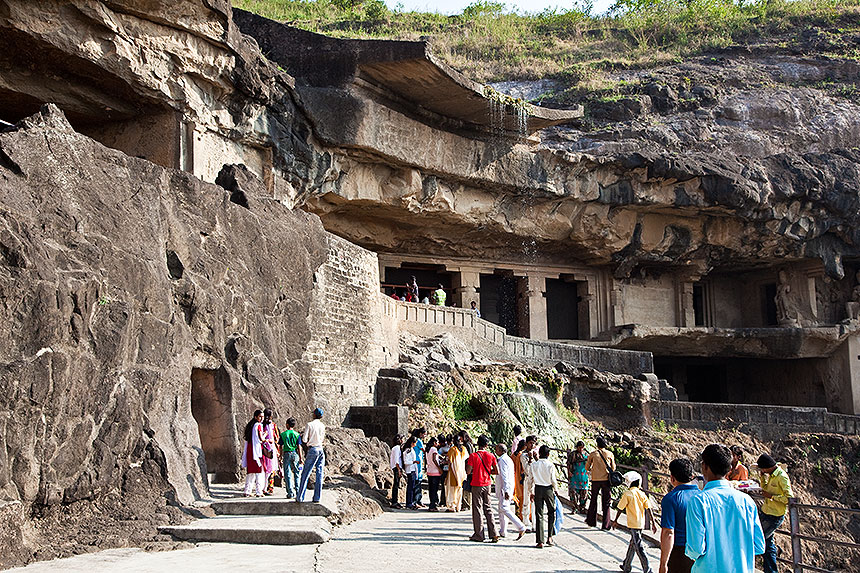
About 19 miles northwest of Aurangabad is Ellora: a collection of 34 caves along an escarpment more than a mile long, running from north to south. All of the caves were hewn out of the rock face of the cliff in the 7th to 9th centuries, and all of them face more or less west. They are numbered from south to north, which corresponds very roughly to the order of their creation. Caves 1 to 12 were Buddhist (from 7th to 8th centuries); then, as popularity of Buddhism declined, Caves 13 to 29 (from 7th to 9th centuries) were Hindu creations, and Caves 30 to 34 were Jain. We visit Caves 8 and 10 in the Buddhist group, and Cave 16 in the Hindu group; we do not visit any of the Jain caves, which are a mile north of these. In the photograph above we are approaching Cave 8 on the left; in the center directly under the waterfall is the facade of Cave 5. Lower numbered caves are to the right. For assistance in identifying subject matter in the Ellora photographs I am indebted to the Ellora Caves Image Database at www.elloracaves.org.
Cave 8
Cave 8, like all of the first nine, was a monastery cave (not a temple). It is decorated with figures of the Buddha, Bodhisattvas and other scenes from Buddhist mythology, and it provided cells for the monks to sleep in.
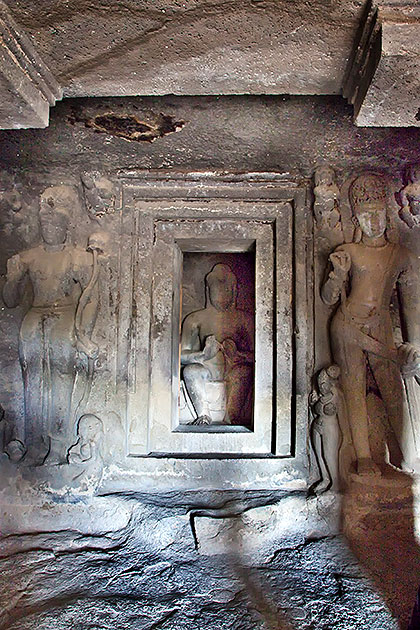
In the main shrine of the cave, the Buddha is flanked by two standing bodhisattvas.
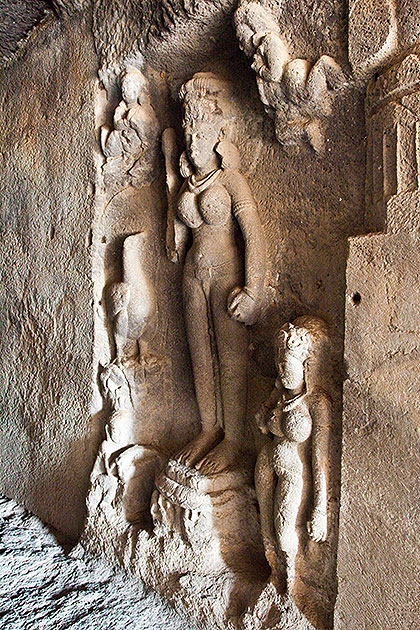
On the right antechamber wall an image of the goddess Mahamayuri appears with her peacock and a sage reading a book (along with flying dwarfs and a female attendant).
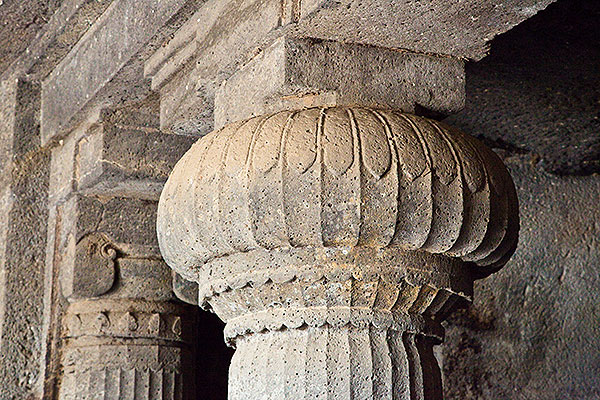
Detail of a pillar at the entrance to Cave 5.
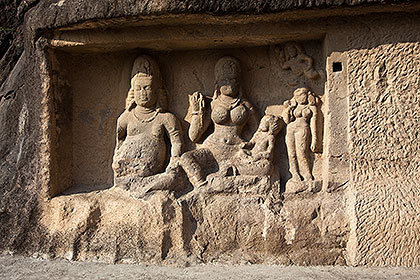
On the wall to the left outside the cave the yaksha Jambhala sits with his wife, Hariti, who holds one of her five hundred children on her lap.
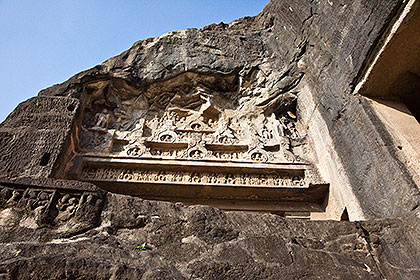
This facade detail of Cave 9 sits right over Cave 8.
Cave 10
Cave 10, also known as Vishwakarma Caitya Hall, is a Buddhist temple.
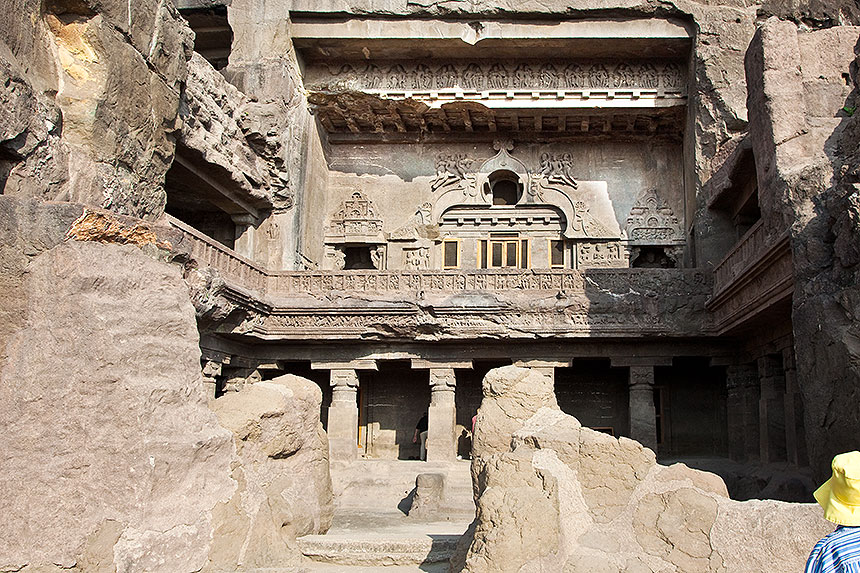
Facade of the grand Caitya Cave 10, also called the Vishwakarma Caitya Hall. "Around the tri lobed opening beautiful triads - each composed of a male and two female celestials converge upon the axis of the arch" [www.elloracaves.org].
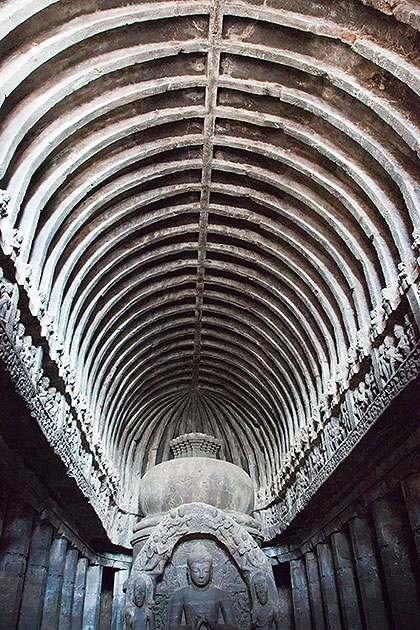
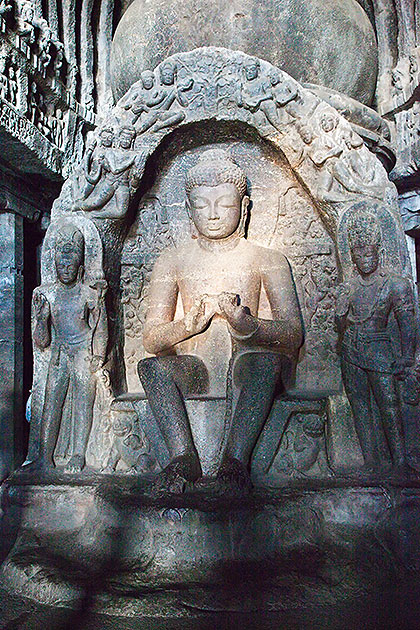
Cave 10: "The main hall, with its impressive colonnade, is focused upon a huge teaching Buddha, seated in the bhadrasana pose on a lion throne. The main image is flanked by standing attendant bodhisattvas: Avalokitesvara (with his long-stemmed lotus and what may be a ruined Amitabha in his jata headdress) to the left and Manjusri (a stupa in his crown) to the right. Similarly, focusing the devotees' attention in front of, rather than upon, the stupa, two pairs of celestial couples on either side, together with the bodhi (pipal) tree over the Buddha's head, form a powerful honorific arch, enclosing the haloed image and the richly decorated throne." [www.elloracaves.org].
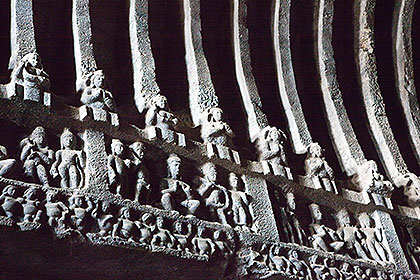
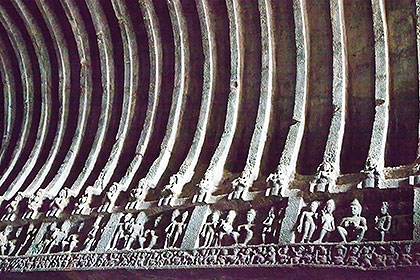
Cave 10: ribbed vault details.
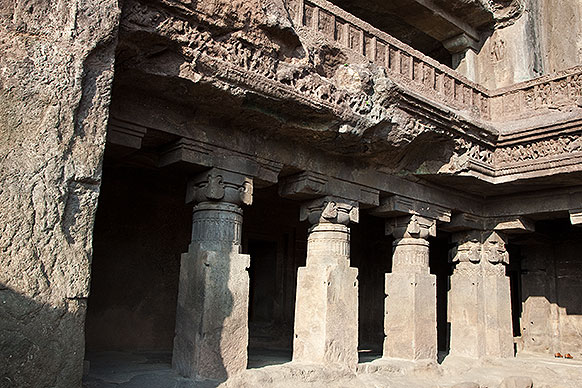
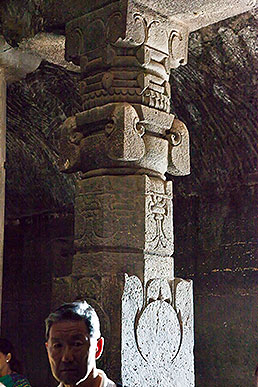
Cave 10: columns and column detail.
Cave 16: Kailasanatha Temple
Cave 16, actually a U-shaped cave surrounding an open courtyard containing a temple, is easily the most impressive site at Ellora. All of it, including courtyard and temple, was carved from the solid rock of the cliff, representing a colossal feat of planning, engineering, artistry and craftsmanship.

Main facade and entry gate to the Kailasanatha Temple.

Kailasanatha Temple, north side: the porch of the main temple (left) is attached by a rock bridge to the Nandi Pavilion (right). In foreground, right, is one of the two Dhvajastambhas (monolithic pillars) in the courtyard.
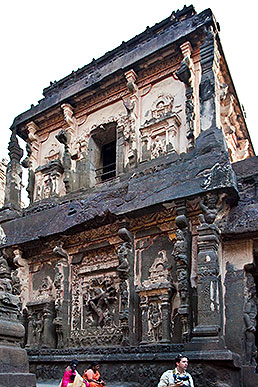
Kailasanatha Temple, north side: Nandi Pavilion.
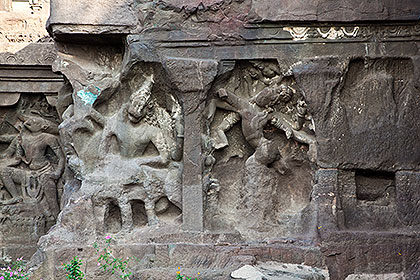
Kailasanatha Temple, main facade: left, Narasimha; right, dancing Siva, with Parvati at his side.
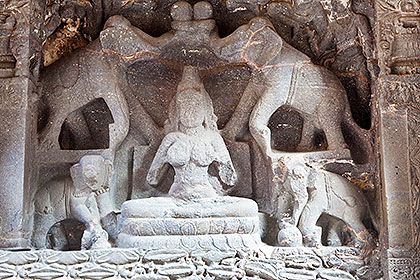
Kailasanatha Temple: Gaja-lakshmi panel in the Nandi Pavilion, showing Lakshmi seated in a lotus pond being bathed by elephants.

Kailasanatha Temple, north wall of the main temple: Mahabharata panels (on the south wall there are Ramayana panels).
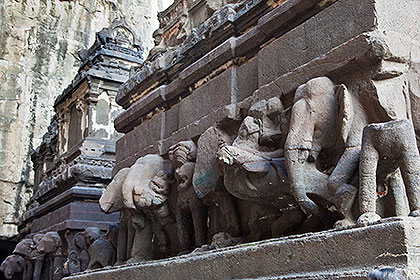
Kailasanatha Temple: elephants holding up the north side of the main temple.
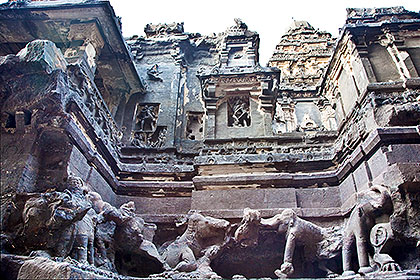
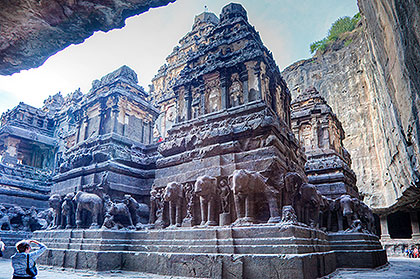
Kailasanatha Temple: south side (left) and west side (right) of the main temple; the tower can be seen beyond.
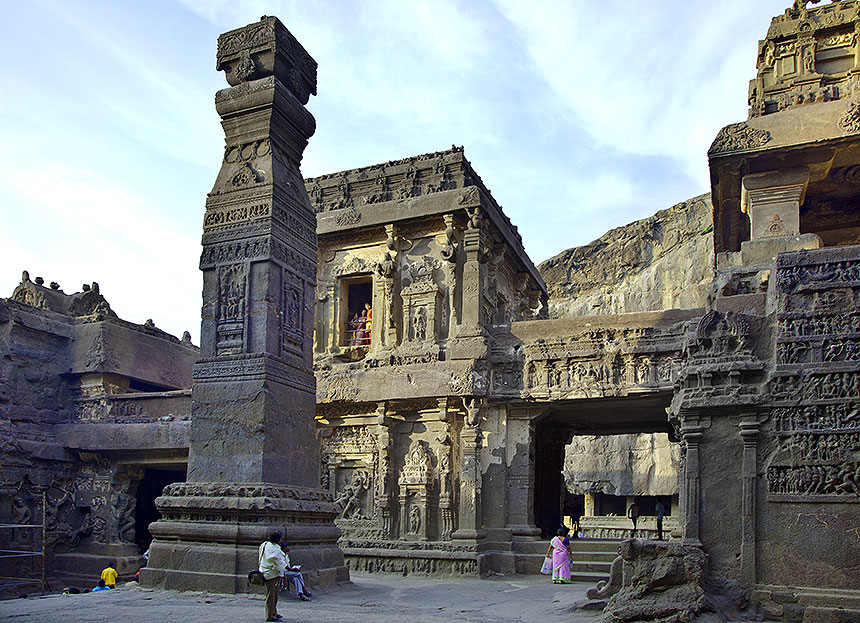
Kailasanatha Temple: main temple (right) connected by rock bridge to the Nandi Pavilion; in front of the pavilion is one of the two Dhvajastambhas, which represent banner-bearing cosmic columns.
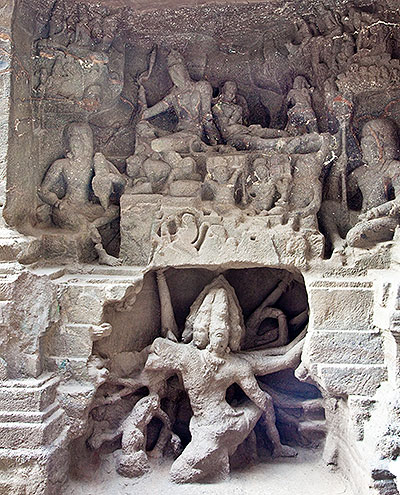
Kailasanatha Temple: Ravana shaking Mt. Kailasa (to disturb Shiva and Parvati). Compare to another similar sculpture at Elephanta.
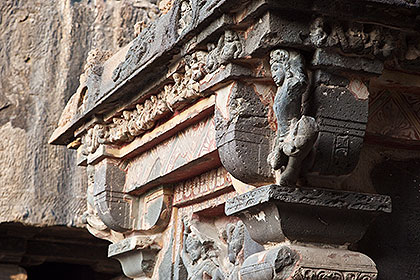
Kailasanatha Temple: column detail.
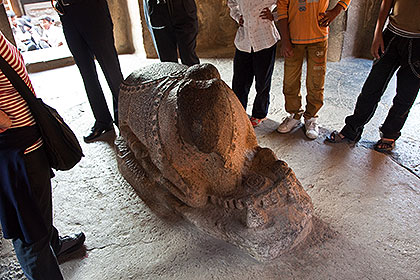
Kailasanatha Temple: Nandi (the white bull on which Lord Siva rides) in the Nandi Pavilion.
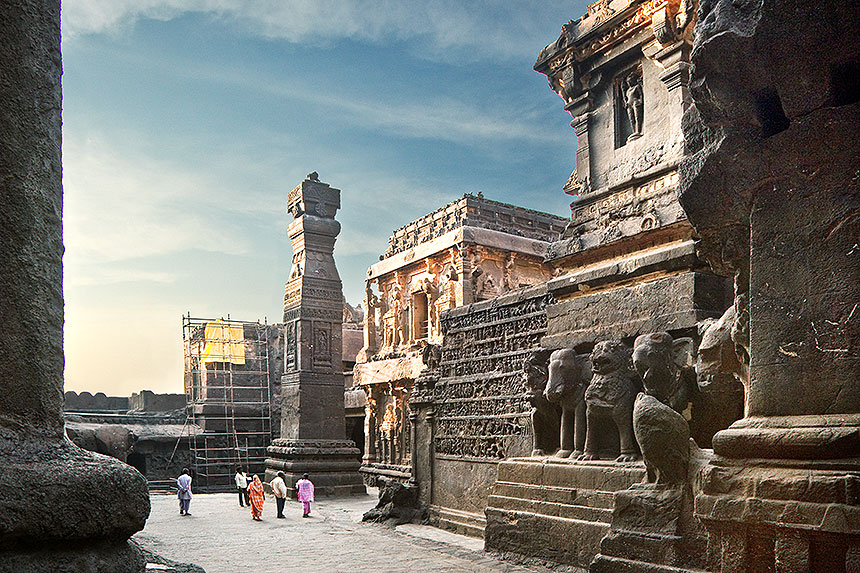
Kailasanatha Temple: final view looking northwest. The main temple is at right, with the Nandi Pavilion and one of the two Dhvajastambhas beyond.